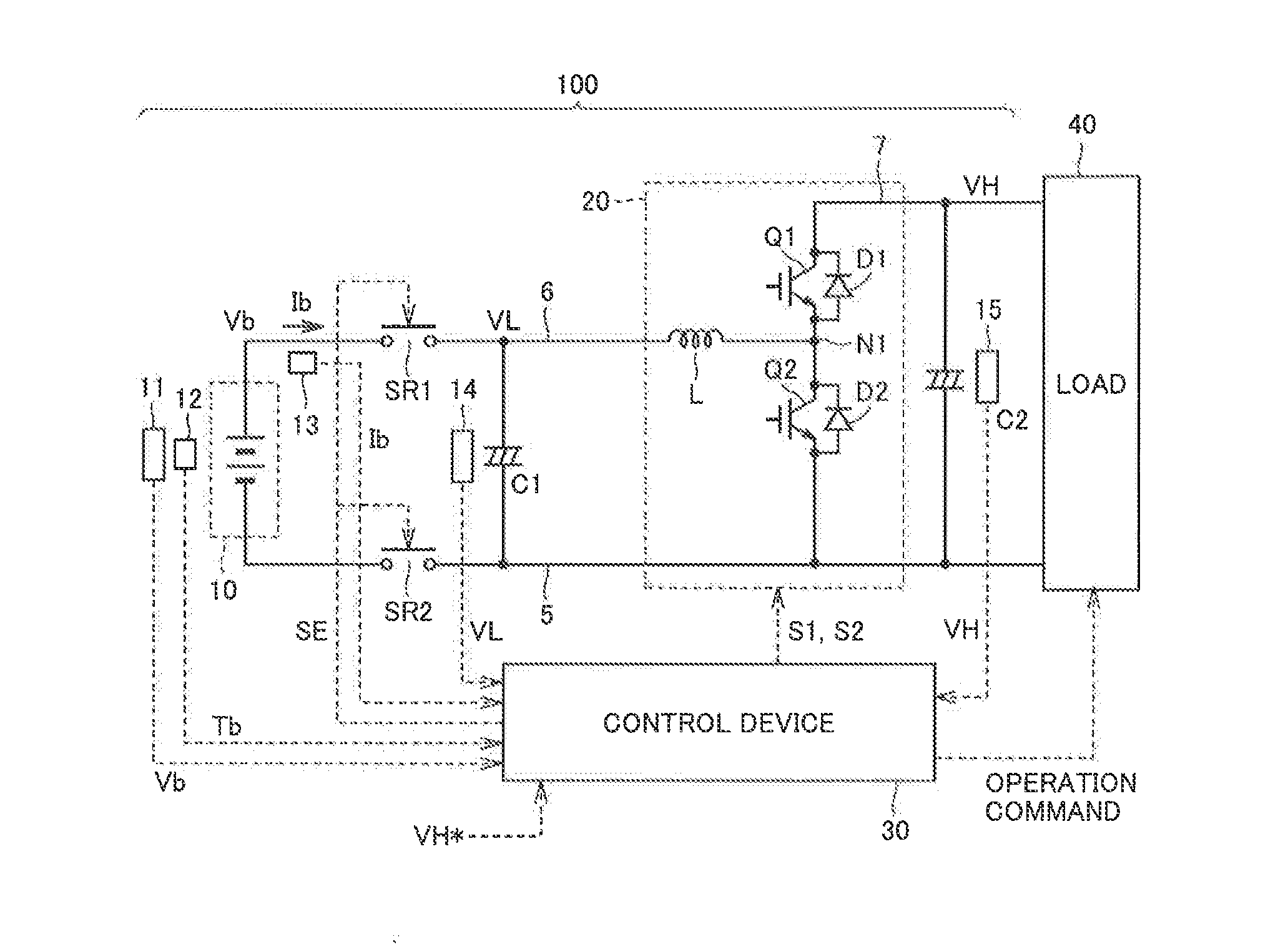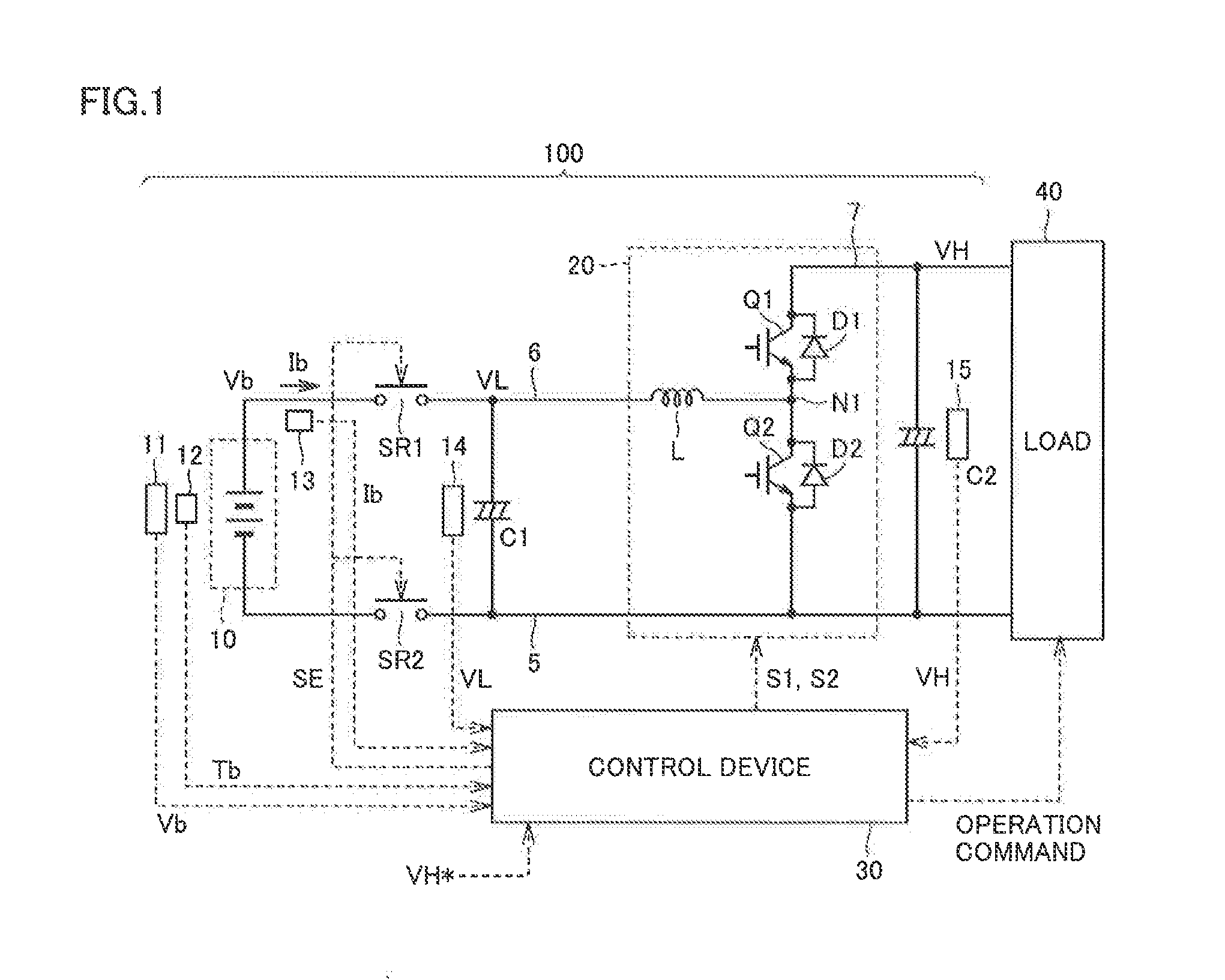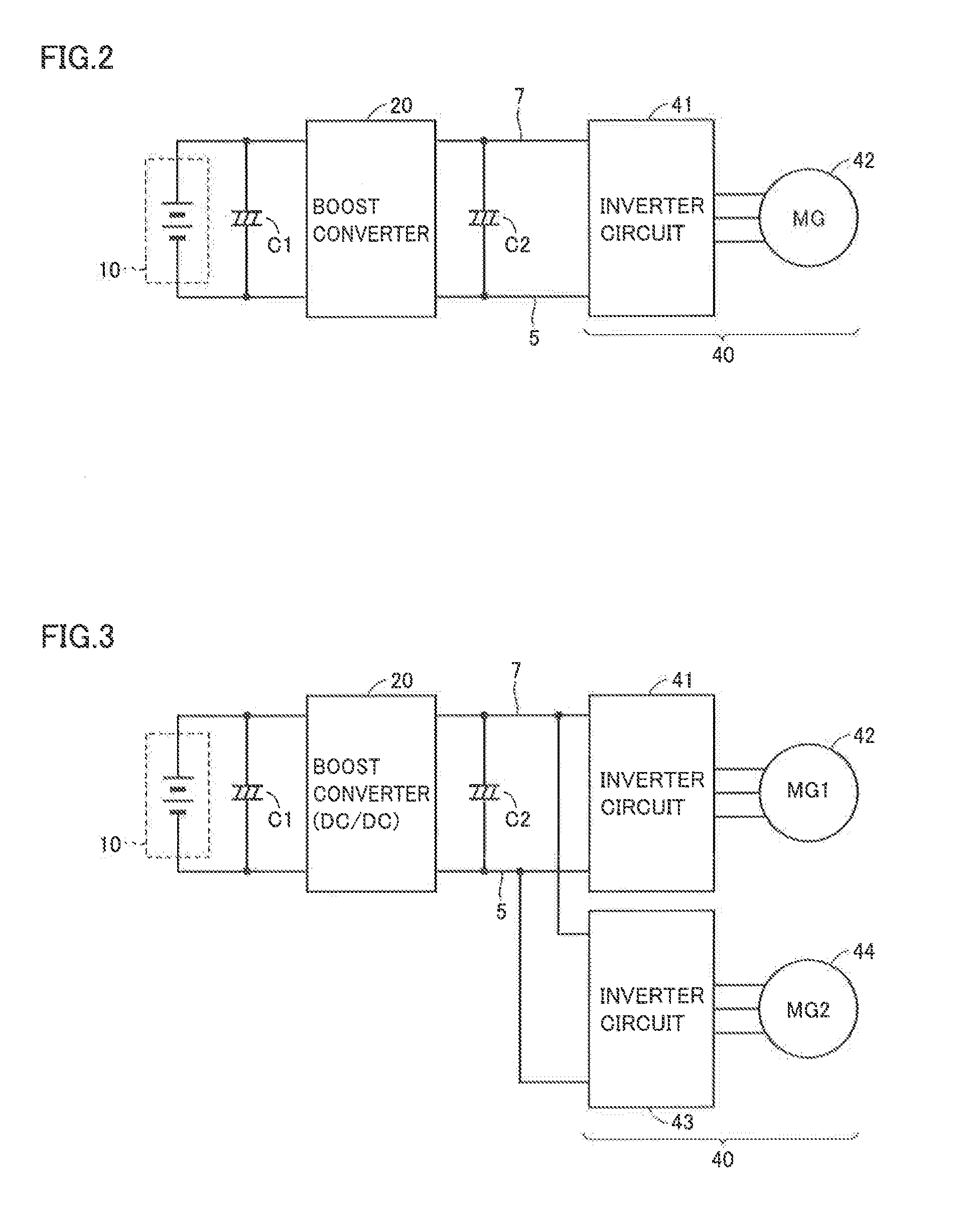Power Supply System Applied to Electrically Powered Vehicle
a technology of power supply system and electrically powered vehicle, applied in the direction of battery/fuel cell control arrangement, electric devices, propulsion by batteries/cells, etc., can solve the problem of achieve the effect of protecting from overheating and not excessively deteriorating vehicle traveling performan
- Summary
- Abstract
- Description
- Claims
- Application Information
AI Technical Summary
Benefits of technology
Problems solved by technology
Method used
Image
Examples
first embodiment
[0029]FIG. 1 is a block diagram illustrating the configuration of a power supply system according to the present embodiment.
[0030]Referring to FIG. 1, a power supply system 100 according to the embodiment of the present invention includes a power storage device 10, system relays SR1 and SR2, smoothing capacitors C1 and C2, a boost converter 20, and a control device 30.
[0031]Power storage device 10, which is a rechargeable DC power supply, is representatively configured of a battery such as a lithium-ion battery or a nickel-metal hydride battery. Alternatively, power storage device 10 can be configured also of an electric double layer capacitor or the like. In the following, power storage device 10 will be also referred to as a battery 10.
[0032]Battery 10 is provided with a voltage sensor 11 for detecting an output voltage Vb (battery voltage), a temperature sensor 12 for detecting a battery temperature Tb, and a current sensor 13 for detecting an output current Ib from battery 10.
[0...
second embodiment
[0122]In the second embodiment, an explanation will be given with regard to the control for further reliably limiting battery current Ib, that is, the passing current flowing through boost converter 20.
[0123]FIG. 10 is a block diagram illustrating the control for thermal protection of a boost converter according to the second embodiment.
[0124]When comparing FIG. 10 with FIG. 9, a Wout limitation unit 270 and an upper limit guard unit 280 are further provided for the control according to the second embodiment.
[0125]Wout limitation unit 270 sets discharge power upper limit value WoutD for thermal protection of boost converter 20 in accordance with current upper limit value IbmaxD set by current upper limit setting unit 200 and battery voltage Vb detected by voltage sensor 11. Specifically, the condition is set as WoutD=IbmaxD*Vb.
[0126]Upper limit guard unit 280 serves to guard base value WoutB that is set by discharge limitation unit 250 so as not to exceed WoutD that is set by Wout l...
third embodiment
[0130]In the third embodiment, the control for positively raising output voltage VH for thermal protection of boost converter 20 (diode D1) will be described.
[0131]FIG. 11 is a functional block diagram illustrating the control for thermal protection of a boost converter according to the third embodiment.
[0132]Referring to FIG. 11, the configuration according to the third embodiment is further provided with a lower limit voltage setting unit 305 and a voltage command value setting unit 310.
[0133]Lower limit voltage setting unit 305 sets VH lower limit voltage VHD from the aspect of thermal protection of boost converter 20 in accordance with cooling water temperature Tcw detected by temperature sensor 155 and battery current Ib detected by current sensor 13.
[0134]VH lower limit voltage VI-HD is set, for example, in accordance with the characteristics shown in FIG. 8. Specifically, in a region where Tc≦Tcw holds, VHD increases in accordance with cooling water temperature Tcw. Preferabl...
PUM
 Login to View More
Login to View More Abstract
Description
Claims
Application Information
 Login to View More
Login to View More - R&D
- Intellectual Property
- Life Sciences
- Materials
- Tech Scout
- Unparalleled Data Quality
- Higher Quality Content
- 60% Fewer Hallucinations
Browse by: Latest US Patents, China's latest patents, Technical Efficacy Thesaurus, Application Domain, Technology Topic, Popular Technical Reports.
© 2025 PatSnap. All rights reserved.Legal|Privacy policy|Modern Slavery Act Transparency Statement|Sitemap|About US| Contact US: help@patsnap.com



